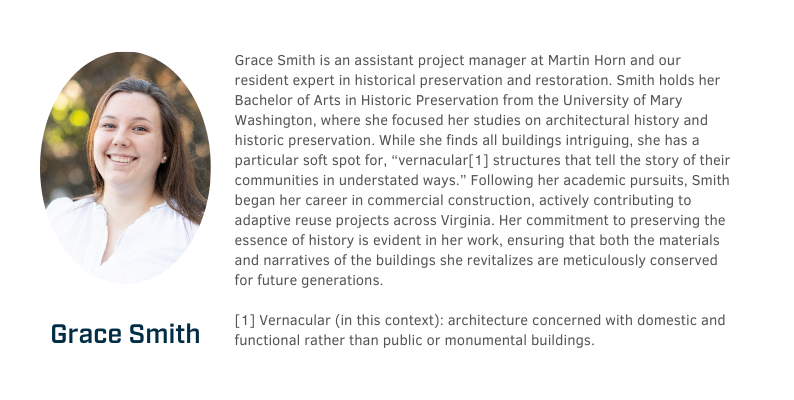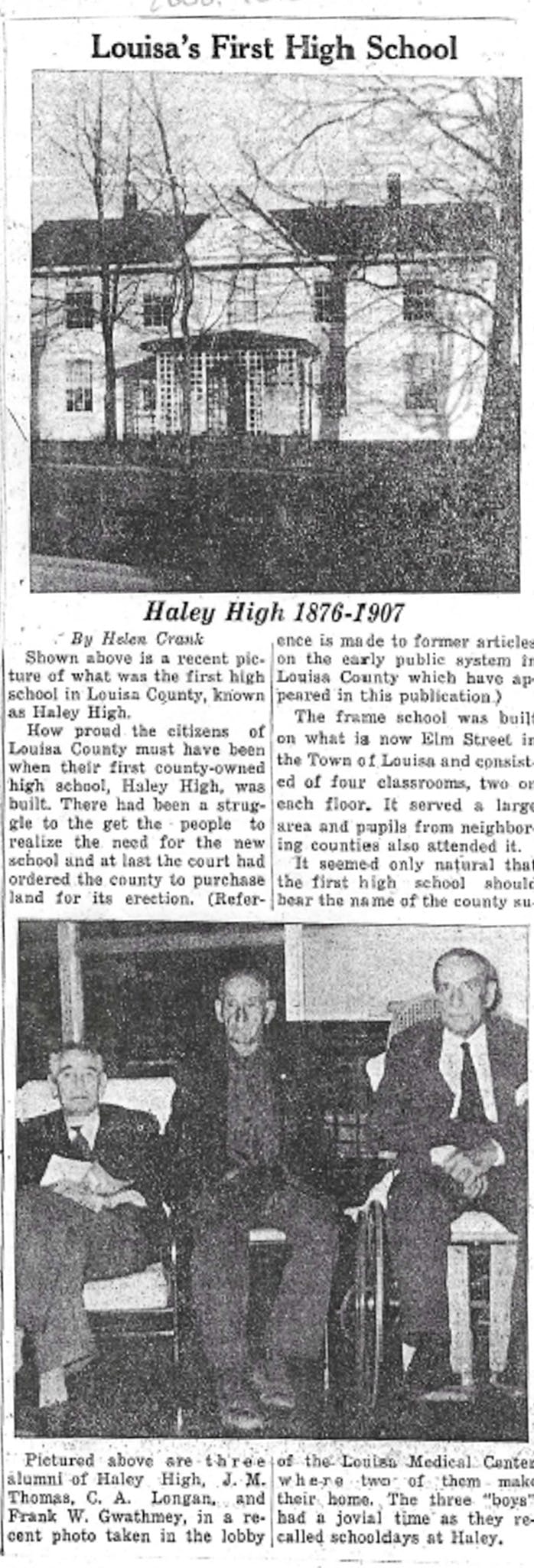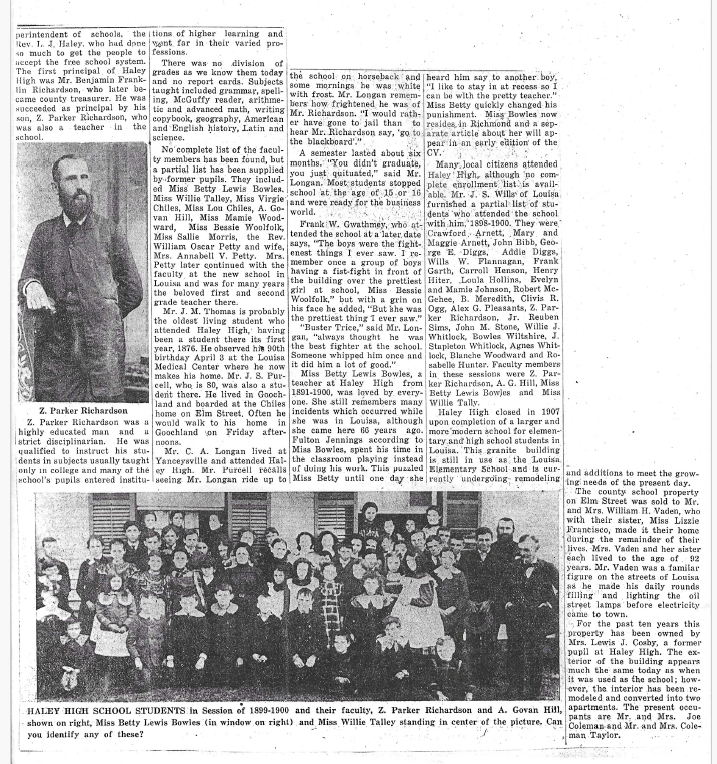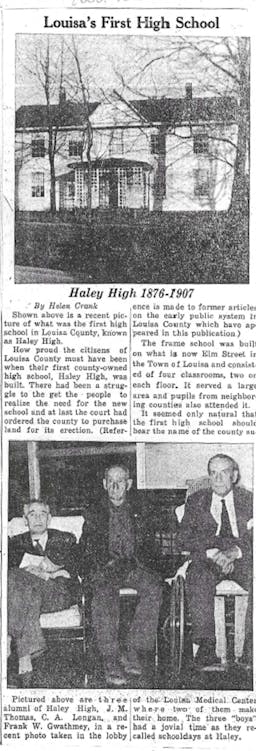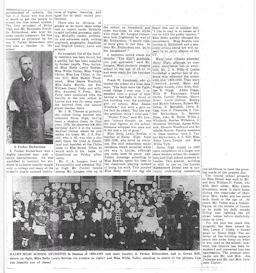The History of Haley High School
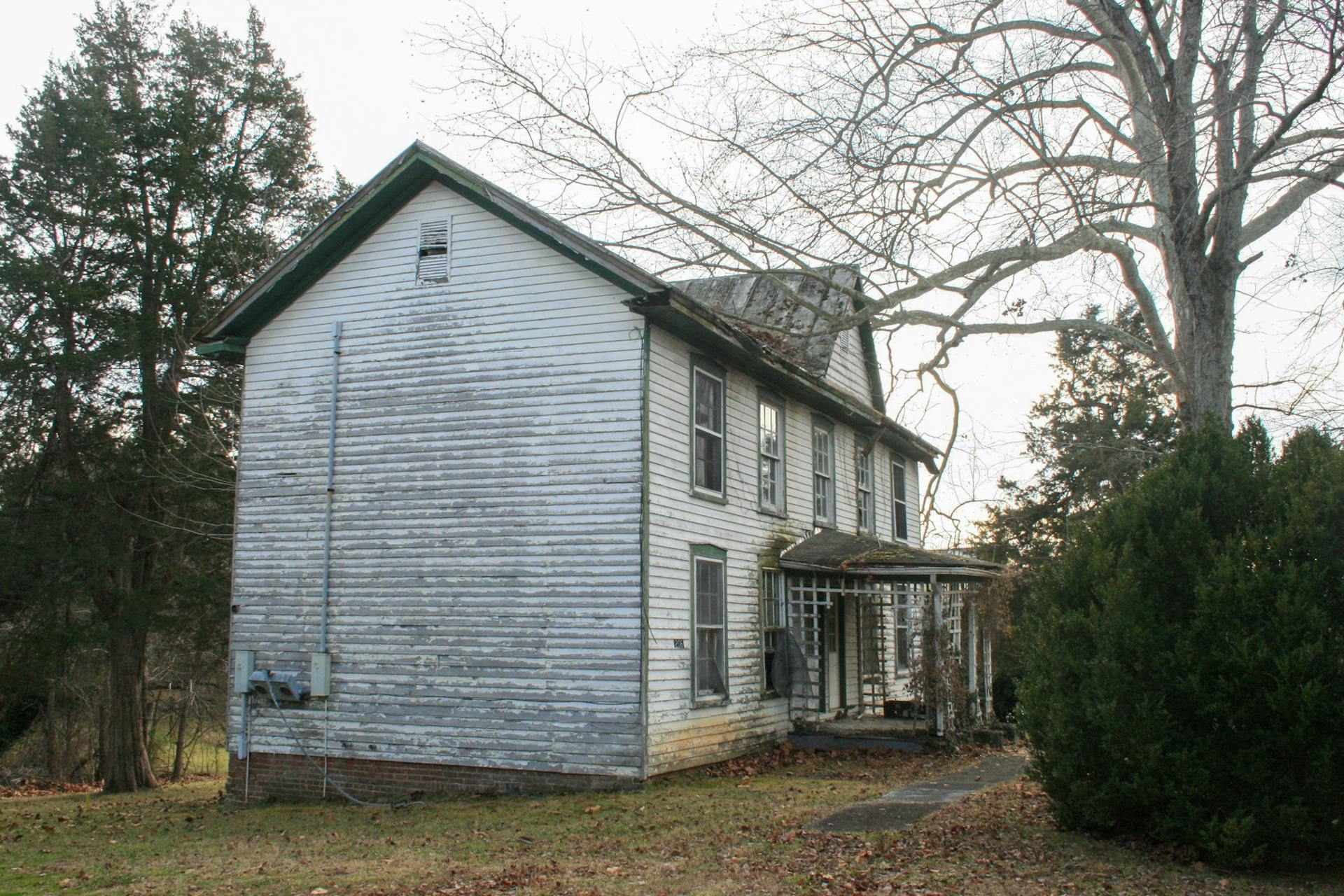
Haley High School Louisa, VA
Named after L. J. Haley, the first superintendent of education in Louisa, Haley High School opened in 1876. This school was the first public white school in Louisa. It closed in 1907 when the new high school was built. It later became a residence, but the layout to the below is the original layout of the first-floor classroom.
This building is a standard four-room central passage house. The main beams (both summer beams and sill plate beams) appear to have been hand-hewn. While it cannot be confirmed, it is likely that these trees were local to the area and were hand-hewn on the site to help conserve costs. Many of the materials were functional, not fancy. It is assumed that the bare necessities approach to the materiality of the structure is related to conserving costs for the community. This includes things like tongue and groove boards being used as walls instead of plaster, no insulation or filling being used behind walls, and decorations being rare until later in the building's life. When Mr. Haley was tasked with raising money for the public schools, many in the area did not support paying more in taxes and thus the building had modest materiality and design.
Following exploratory demolition, we were able to observe the above and make a few more conclusions about the building's life as a school and beyond. Underneath layers and layers of drywall and wallpaper, we unearthed the original tongue and grove boards. Black boards were found on the north walls and were simply black paint as opposed to the blue paint used everywhere else on the walls. We believe the first-floor classrooms were for older students
while the second-floor classrooms were for younger students; the first-floor blackboard starts at about hip height and rises all the way to the ceiling; the second-floor classroom blackboard starts at about knee height and rises to just above head height. This difference in placement reflects keeping learning accessible to both the shorter (younger) and taller (older) students that attended.
On several of the walls, we discovered graffiti of older students who attended the school. While they did misbehave in their day, Rosebud Johnson and Dave Harris left their mark on the Haley School House. Other students left their mark as well, but their graffiti has not been identified at this point. students that attended. After its time as a schoolhouse, the building became home to the Vaden Family. Mr. Vaden maintained the oil lights in Downtown Louisa, checking on them and refilling them daily until electricity was installed. The Vaden's installed wallpaper over the horizontal board walls. Since the walls were not flat due to the joints where the boards met, Mrs. Vaden and her sister, Miss Francisco, used their fabric scraps to smooth the joints. Their scraps included dress hems, both machine-sewn and hand-sewn. In the house's upper rooms, it would appear they ran out of scraps and turned to newspapers to do the job. Unfortunately, the newspaper underneath the wallpaper was almost completely disintegrated, but its outline against the wall could still be seen.
In 1948, Mrs. Lewis J. Cosby, who was a student at Haley High, bought the home. Between 1948 and 1958, the property was converted into a duplex. It would remain a duplex for the rest of its life. Somewhere in that ten-year span, the front door was removed to allow the central hall to be split for the units. One unit was on the first floor, and one was on the second. A wall was installed next to the stairs, and two front doors were installed so that tenants could enter without impacting each other. The western entry to the 15 classroom was filled in to keep the spaces separate.
206 Elm Street was the birthplace of public schools in Louisa. Though its modest appearance may have led some to overlook it later in its life, this building impacted generations of Louisa residents and became home to more than just students. Though it no longer stands, this building will always be fondly remembered and respected for its service to public education.
